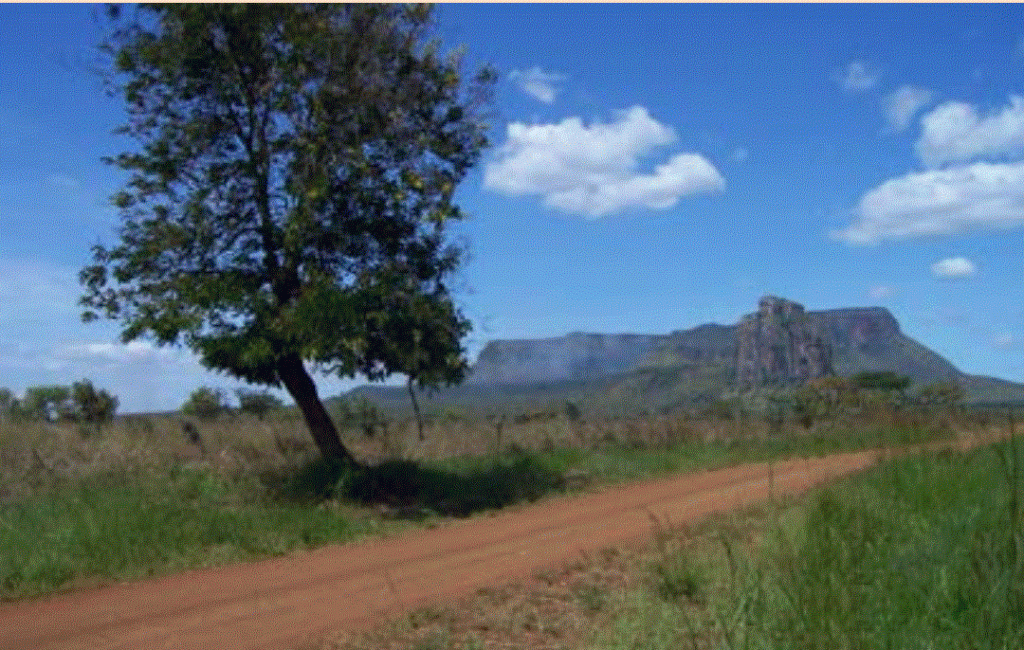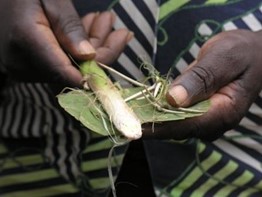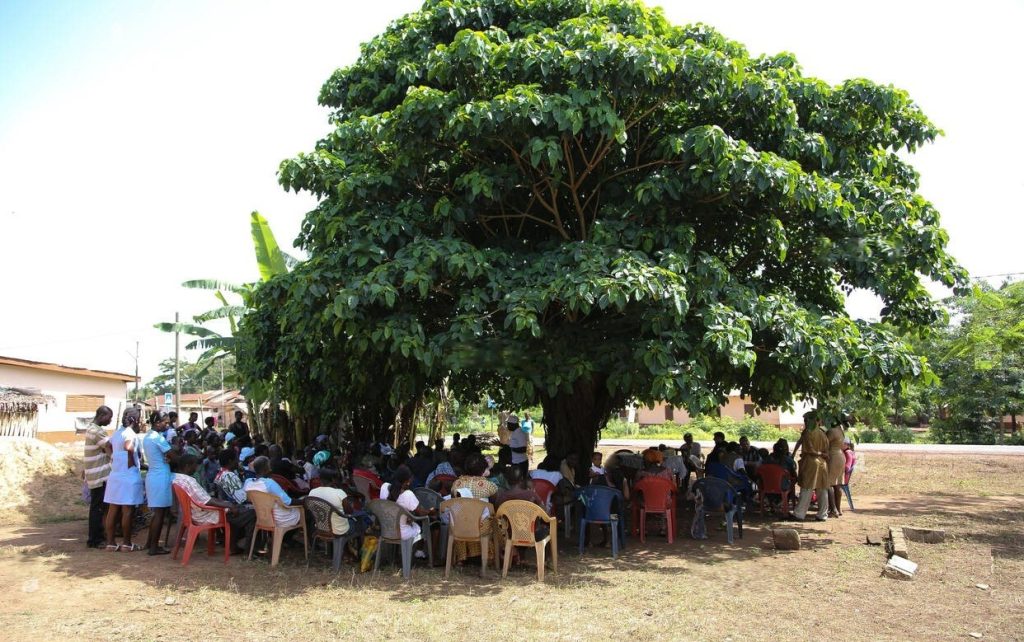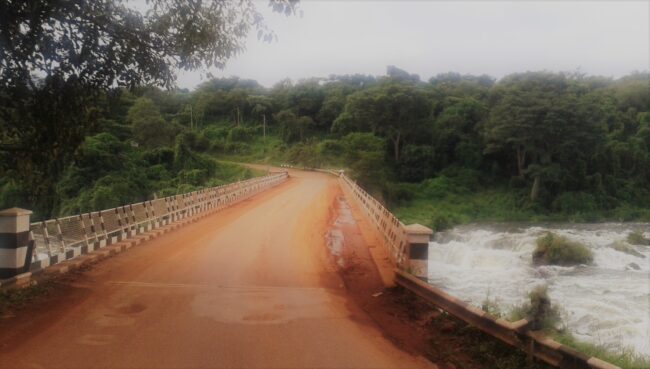There is consensus that access to (and enjoyment of) a healthy environment, biodiversity and natural resources is central for the fulfilment of various human rights (e.g., food, water, or shelter). Conceptual and legal connections are usually done between economic, social, and cultural human rights and the natural environment by considering the importance of biodiversity and natural resources’ exploitation in people’s livelihoods and cultural reproduction. However, I argue, there are many other roles ‘nature’ can play in consolidating sustainable peace and human rights.
In post armed conflict settings, with the urgent need to attend gross human rights violations and set up the reconstruction of the economy and state institutions, there is a general tendency to consider the natural environment either as resources to be exploited or as space to be territorialised to facilitate this process (e.g., building communication infrastructure).
In Northern Uganda the natural environment seems to be far much more important than as mere provider of resources for post-conflict peacebuilding. Based on a preliminary literature review and online interviews with local stakeholders, I look into the role that the natural environment or ‘nature’ plays for communities in Northern Uganda. I focus on those roles that I consider to be relevant to fostering sustainable peace and human rights in conflict affected areas.
The natural environment in Northern Uganda beyond natural resources and biodiversity
As discussed in an earlier post in this blog, over a long period of time Northern Uganda has been the scenario of war between two armed parties: the Lord Resistance Army (LRA) and the Uganda People’s Defence Force (UPDF) (Government of Uganda) particularly around Acholi sub-region (or Acholiland). Peoples and nature found themselves in the middle of a violent conflict, which consequences are still felt today.
In looking into what kind of conflicts arose during peace time and how local communities heal and recover after two decades of violence, I found three issues that stand out in relation to the natural environment and how nature could be conceptualised beyond ‘natural resources’. In the following sub-sections, I give a closer look at them: (a) nature as a semiotic system, (b) nature as medicine for the soul, and (c) nature as public space.
Nature as semiotic system
In Northern Uganda, once people start moving out of internal displaced camps (IDC) and resettling ‘back home’, evidence shows that conflict among families and clans arose due to access to land. One of the diverse explanations about land conflict relates to the change in the natural environment, the disappearing of features in the landscape that used to serve as markers for territorial formations. The war took these natural markers with it. According to OHCHR:
“In northern Uganda almost all land, particularly in rural areas, is owned under customary tenure as first recognized by the 1998 Land Act. Accordingly, land is owned without any form of documentation, ownership being based on previously accepted settlement on a plot of land and use thereof. Land boundaries are equally not surveyed nor recorded in any way. Boundaries are, however, known to the members of the communities and marked with natural features, including trees and field refuse” (1).
The natural environment plays a central role in people’s everyday life as a semiotic system. This means that different people give different meanings to rivers, ponds, stones, trees, etc. In this sense, the biophysical world can be a powerful means to anchor -but also allow movement of- individuals and groups across space and time.
Different elements of the natural environment (from a river to a stone) can be powerful markers. These elements have a semiotic purpose: they assist people in navigating their surroundings, their ‘environment’. A mango tree at a crossroad, a stone on the right side, two strings of water intersecting, a pond by the left of the road, among other, can be used by local peoples to sign the way to reach somewhere, to move around, to find their way. When land ownership is based on customary tenure and no boundaries are set by formal demarcation systems, peace between families, communities, clans depend on these landscape markers (2).
What happens then when these markers are gone? When in 2007 people started returning to their family or ancestral lands, in many cases they could not recognise those lands they used to cultivate, use for hunting or gathering, grazing animals, or performing spiritual rituals. Those trees, stones, waters, even graves, that once helped people demarcate their parcels and navigate their surroundings were no longer there. A decade-long life in IDC made burials completely different from the past. Family graves, once powerful markers in the landscape to claim land rights due to ancestry, were gone, and with that the possibility to access and secure land (3).
Looking into districts and sub-regions boundaries conflicts in post-conflict Karamoja and Teso, Bainomugisha et al. (2007:12) provide a telling narrative about the relevance of the natural environment and landscape in territorial formations for local peoples:

“… the Acacia tree marks the border line between Katakwi and Moroto districts and has a milestone that runs through to Sising hill and bares a straight line up to Lotukei Mountain. Also, along the same axis can be traced the old mark of signposts which were inscribed South of Karamoja in 1963. These border marks can be found adjacent to the same acacia tree and during the dry season, the straight lining can be seen from above in an aerial view”. (4)
“The Acacia tree: The boundary between Karamoja and Teso? (Photo by Ngoya J.B.)”. Source: Bainomugisha et al. (2007:19).
Nature as medicine for the soul and social bonding
The Agreement on Accountability and Reconciliation signed in 2007 between the Government of Uganda and the LRA clearly defined four different traditional rituals performed by the Iteso (Ailuc), the Langi (Kayo Cuk), the Acholi (Mato Oput) and Madi (Tonu ci Koka) “to reconcile parties formally in conflict, after full accountability”.
Cleansing and reconciliation rituals play a key role in Acholi culture. After the war, there was a desperate need for reconciliation between civilians and abductees (ex-combats), a need to welcome them back, a need to heal from distress that is still felt today (5).
Mato Oput is probably the ritual most written about. It is a reconciliation ceremony that takes place after a killing of someone from a friendly clan (6). The term refers to the drinking of oput, a bitter drink prepared with smashed roots of the Oput tree and drunk at the pick of the ceremony. Some consider that “there is perhaps no single tree more vital in the great work of healing from the brutal civil war that has raged throughout Acholiland for over twenty years” (7).
In fact, Joseph Wasonga tells that when in 2003 Museveni – Uganda’s president – referred to the situation in the north of the country to the International Criminal Court (ICC), he brought into light the fact that for many different stakeholders the local justice system should be in charge of the process of “mediation, trust building, acknowledgment of wrongdoing, compensation, reconciliation, and restoration” (8). Wasonga adds that:
“The principles and practice of mato oput are founded upon the Acholi belief that crime is essentially a violation of relationships in a community. Hence, mato oput can be instrumental in restoring broken relationships between victims and survivors and between perpetrators and the entire community. Ugandans continue to debate the capacity of mato oput as a mechanism for sustainable peace in the context of the intractable conflict in the north” (8).
The mato oput ceremony is the culmination of a long process of mediation. For the performance, not only parts of the Oput trees are needed but other elements from nature or the local natural environment.

Preparing for the Mapo Oput ceremony
Source: Flickr. Copyright © 2010 Justice and Reconciliation Project
There are other ceremonies and rituals associated with ‘traditional ways of coping with consequences of traumatic stress in Acholiland’ (6). Cleansing rituals are central in this process, and elements from the natural world such as tree branches or sticks, eggs, livestock, are necessary for ceremonial performances. Thomas Harlacher tells us that “the nyono tonggweno (“stepping on the egg”) and lwoko pik wang (“washing away the tears”) rituals have been especially important in the welcoming and initial cleansing of people who have returned to the community from the LRA war” (6).
In all these cases, the natural environment of local communities is relevant and necessary for accountability and reconciliation, for healing and sustaining peace.
Nature as public space
Finally, other issue that stands out in relation to the role of the natural environment for peacebuilding and human rights, is its function as public space.
In Uganda, as in many other places of the world, trees in villages are important spaces for reunion. Big or small trees provide shelter from the sun, thus people stay under their shade to cool down, to chat, to play, to read, to teach or study, even to discuss the future of the local community.
The public space under a tree might serve as an arena for political participation, empowerment, and social cohesion, for community healing and reconciliation.
A group of people gathered under a tree
Photo: C.C. Chapman, 2012, in Alamy Stock Photo

Some tree species are deemed sacred, and some ones (because of their size, shape or location) are considered worth of worship (as the Nakayima tree in central Uganda, which is considered a shrine).
As public space, the natural environment is central in the fulfilment of many different human rights, not only those related to a healthy environment. I am thinking here on those aspects of public space that are conduit to political participation, community development, social and cultural reproduction, among others.
Final comment: the natural environment in peacebuilding and human rights
Different cultures use and valorise nature and their environment in diverse ways. The natural world form part of local and global narratives and cosmologies and it is intrinsic in many aspects of everyday life.
A narrow understanding of nature that restrict people’s possibilities to relate to each other (relations among the different genders, age groups, clans, tribes, ethnic groups, etc.) can further create conflict either by marginalising certain socio-ecological knowledges or destroying the material base for peoples’ relations among themselves and with their environment.
In this context, the natural environment turns out to be a catalytic agent for human rights fulfilment, transitional justice and sustainable peace in ways that go beyond fair access and distribution of natural resources.
Acknowledgements
I extend my gratitude to those local stakeholders in Acholi who had shared with me their time to talk over Zoom or phone about their current interventions in the region to promote peace and sustainable development.
I am thankful to Amaranta Thompson, Marta Kolankiewicz, Riya Raphael, Vasna Ramasar, and Alice Kasznar Feghali for their feedback on an earlier draft of this blogpost.
This research is supported by the Swedish Research Council for Sustainable Development (FORMAS – Grant 2018-00453).
References
(1) OHCHR (2008). “Activities of the Office of the High Commissioner for Human Rights in Uganda. Annual report of the United Nations High Commissioner for Human Rights and reports of the Office of the High Commissioner and the Secretary General. Report of the High Commissioner for Human Rights and follow-up to the World Conference on Human Rights. Addendum.” A/HRC/7/38/Add.2 (paragraph 29).
(2) Kandel, Matt (2016). “Struggling over land in post-conflict Uganda”, in African Affairs 115(459): 274–295. https://doi.org/10.1093/afraf/adw001
(3) Meinert, Lotte, Willerslev, Rane & Seebach, Sophia (2017). “Cement, Graves, and Pillars in Land Disputes in Northern Uganda”, in African Studies Review 60(3): 37-57. doi:10.1017/asr.2017.119
(4) Bainomugisha, Arthur; Okello, Julius & Ngoya, John Bosco (2007) “The tragedy of natural resources dependent pastoral communities. A case of Teso-Karamoja border land conflict”, ACODE Policy Research Series 23. Advocates Coalition for Development and Environment, Kampala.
(5) Kasozi, Okot Benard (2019) “Fragile Resilience: “Post-Conflict” Environmental Battles in Northern Uganda”, in Refugee Law Project website. Refugee Law Project, Kampala.
(6) Harlacher, Thomas (2009). Traditional ways of coping with consequences of traumatic stress in Acholiland Northern Ugandan ethnography from a Western psychological perspective, PhD dissertation. Department of Psychology University of Freiburg, Switzerland.
(7) Moll-Rocek, Julian (2016). “Healing in Community: Three Acholi Plant Medicines”, in Wild Forest and Fauna website. https://wildff.org/healing-community-three-acholi-plant-medicines/
(8) Wasonga, Joseph (2009). “Rediscovering Mato Oput: The Acholi Justice System and the Conflict in Northern Uganda”, in Africa Peace and Conflict Journal 2(1): 27-38.
(9) Macdonald, Anna & Kerali, Raphael (2020) “Being Normal: Stigmatization of Lord’s Resistance Army Returnees as ‘Moral Experience’ in Post-war Northern Uganda”, in Journal of Refugee Studies 33(4): 766–790. https://doi.org/10.1093/jrs/fez117

